Since 1964 the population of the UK has grown by over 10 million people (18.7%). About 50% of this growth has occurred in the past 15 years.
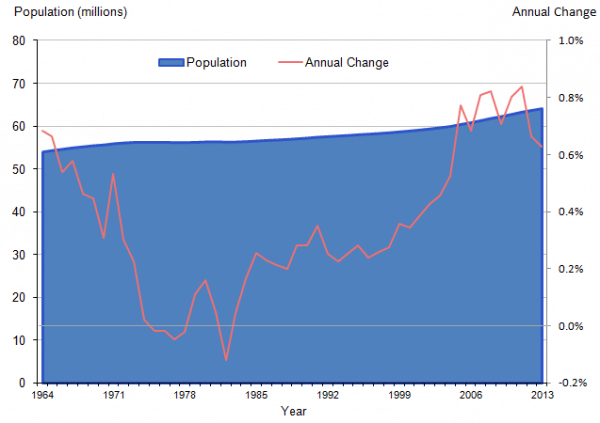
In recent years, the rate of population growth has exceeded 0.6% a year.
UK population predictions
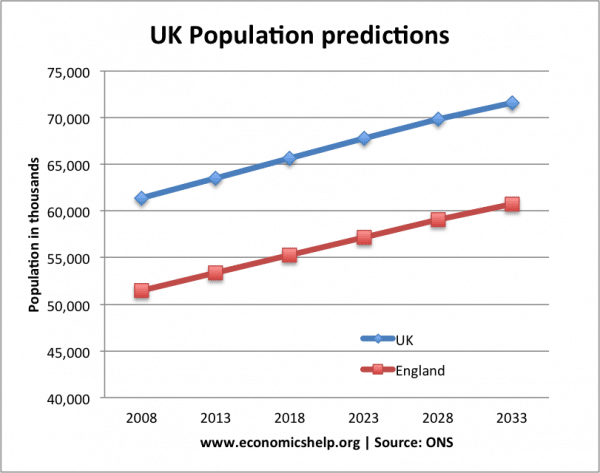
The biggest population growth is predicted in England, and the south east especially.
Population forecasts for UK
| 2008 | 2033 | |
| UK | 61,393 | 71,623 |
| England | 51,460 | 60,715 |
| Wales | 2,990 | 3,347 |
| Scotland | 5,169 | 5,544 |
| N.I | 1,775 | 2,016 |
What is causing the growth in the population?
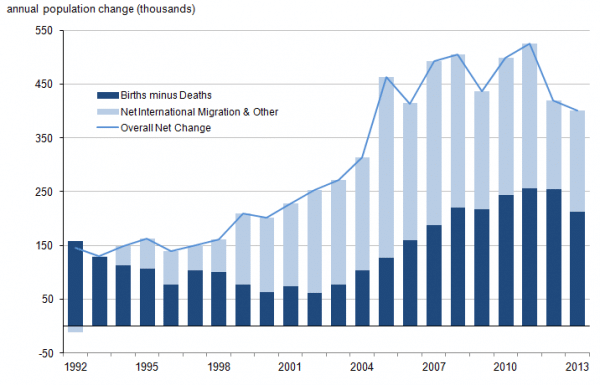
- Improved life expectancy
- Net migration
In 2013, net migration was accounting for roughly half of the population growth.
- In the year ending June 2014. There was net migration of 260,000. Of which just less than half was from the EU (142,000) and the other (168,000) from outside the EU
Net migration
_
Where migrants come from
Birth rate in UK
- There were 698,512 live births in England and Wales in 2013, a decrease of 4.3% from 729,674 in 2012.
- In 2013, the Total Fertility Rate (TFR) decreased to 1.85 children per woman, from 1.94 in 2012
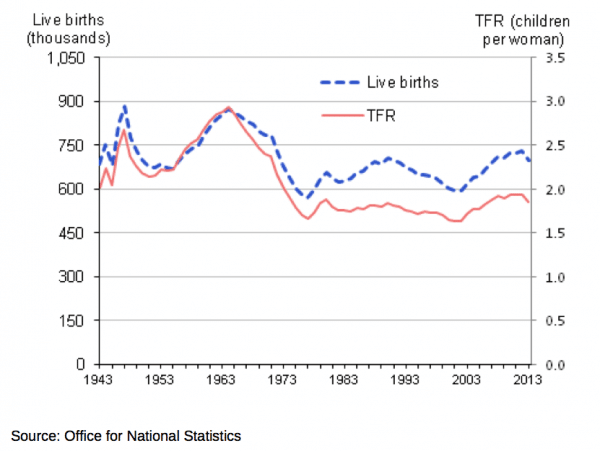
The fertility rate of 1.85 per women is higher than many European countries, such as Germany where it is as low as 1.35.
Impact of improved life expectancy
With increased life expectancy being a major driving force of rising population, we will see a significant increase in the number of people over 65. The number of people over 65 will increase from 16% of the population in 2008 to 23% of population by 2033.
In particular, there will be a significant increase in the number of very old 90+, 100+
Graph showing change in age profile of UK
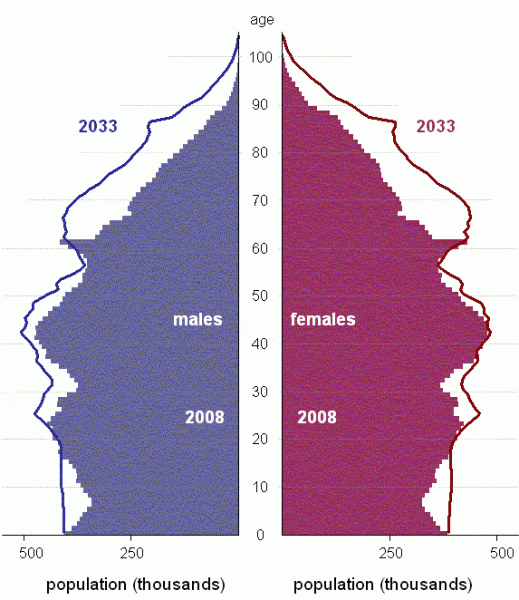
Net migration is a factor in the increase in working age population demographics.
Rise in one person households
Another factor in the rising population is that there will be a proportionally bigger percentage increase in one-person households. Therefore, the number of households will rise faster than the population.
Some economic implications of rising population
- Increasing demand for housing – both to buy and rent. However, the UK finds it difficult to increase supply. Local pressure groups often resist building of houses on greenbelt land. Therefore a long term forecast for house prices would be upward.
- Tax revenue. A rising population will make it easier for the government to deal with an ageing population. The UK faces less of a demographic shift than other European countries such as Italy. The burden on pensions and health care will be less than in other European countries
- Transport. Combined with economic growth, an increasing population will lead to significant increase in demand. Yet, the capacity to increase road space is limited. This is part of government’s rationale for high speed rail travel.
- See more at: economic impact of rising population
A rising population has both benefits and costs. One big dilemma will be how the UK deals with transport congestion.
Historic population growth
1801 – population of Great Britain was 10.5 million
The population of England doubled from 16.8 million in 1851 to 30.5 million in 1901
Related

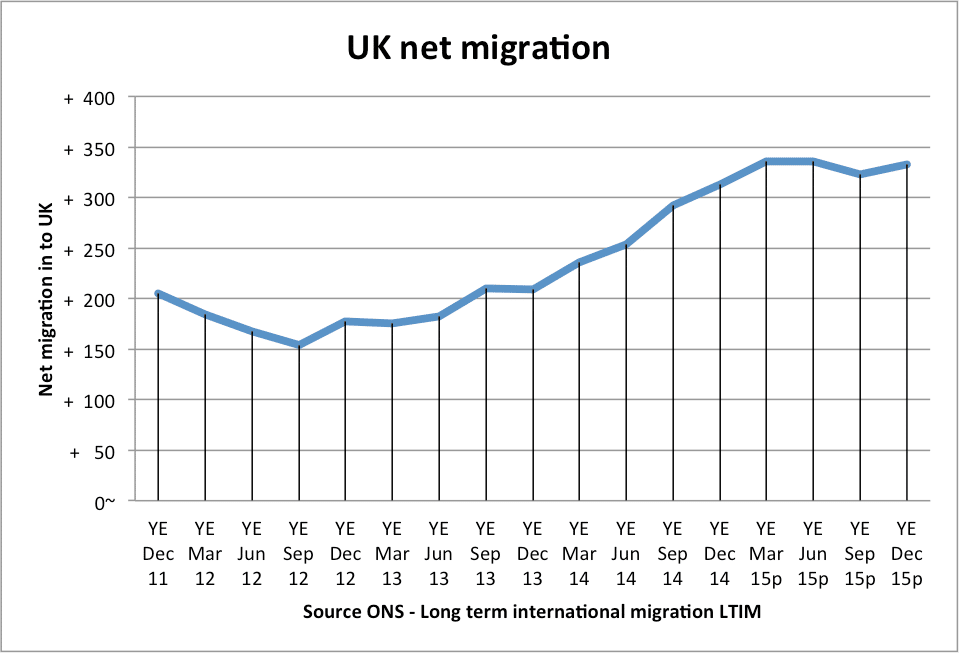
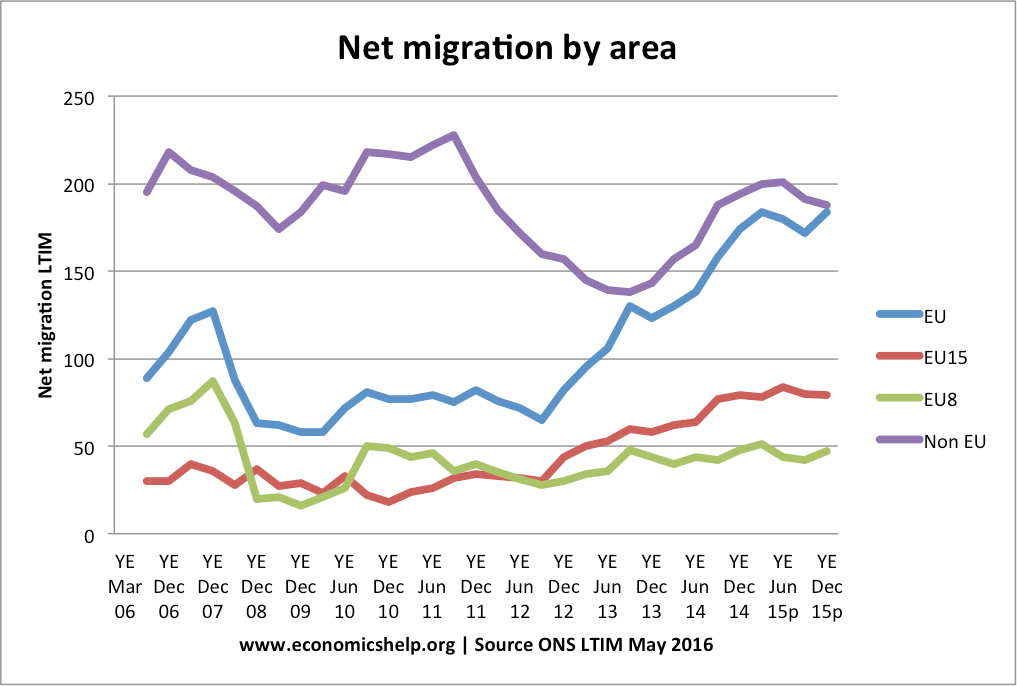
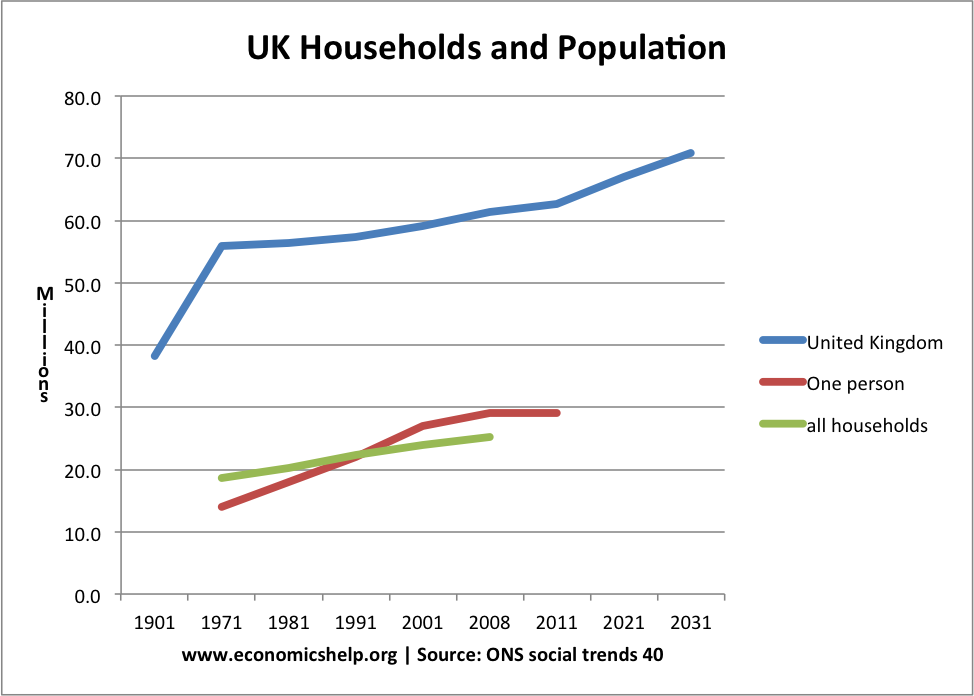
Is it noticed that the population in the last 5 years has increased by 9853? Also, each year the population of Cambridge increases by 1970.6 in terms of aggregate.